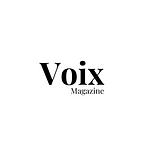Fortifying the Future: The Student Healthcare Readiness Program
Healthcare professionals. The very people who uphold society’s well-being diagnose and heal us to the best of their ability. Amidst the pandemic, the need for healthcare professionals has increased exponentially, and their value to society is more illuminated than before. Many tributed these front-liners who have placed the lives of others before theirs in the face of lethality and harm; inspiring future generations to take up the mantle of being a part of the healthcare community. Unfortunately, when it comes to individuals who come from low-income families, attaining that dream has proven to be a road hexed with challenges.
According to Forbes, in a report by the Association of American Medical Colleges, there was an average of $200 000 in student debt amongst the class of 2021 — excluding the debt accumulated from their undergraduate studies. With the exorbitant cost of medical school in mind Livia Lacobelli, a senior at High Tech High North County, founded the Student Healthcare Readiness Program (SHRP) currently based in California.
As a person with a much-vested interest in the medical industry herself, Lacobelli wishes to alleviate the financial woes associated with healthcare courses to provide equitable access to education, predominantly amongst youths within low-income families. The program mainly targets high school seniors but aims to expand its reach to students in the preliminary stages of their education journey.
From mentors to webinars, the program offers individuals the resources needed for them to build the skills needed in medical school, primarily on how to obtain financial aid.
“I wanted to combine my love for healthcare with my love for education and give it to people who needed the knowledge”, replied Lacobelli when asked about the origins of the non-profit organization that has recently opened its doors to welcome new members into the organisation.
In the healthcare industry, in order to rise to the top, it is vital to be well-funded and have a big branch network consisting of people in the field or related ones. In society today, one’s economic status dictates the window of opportunities made accessible. According to Lacobelli, the connection between patients and their caretakers is quintessential; hence driving the need of having people from a plethora of communities and backgrounds.
Healthcare has long been a topic of fragility with undivided opinions as to how it should be run. According to an article published by the Savvy Pre-Med, in the past 20 years, the cost of private medical schools has increased by 165% whilst 312% in public medical schools in the US alone. This presents the discriminative nature of the industry that skews itself towards those privileged enough to afford the increasing tuition fees.
The soaring cost of medical school is only adding to the debt they will face once they graduate which is a pertinent problem in the United States. Though it is a known fact that, medical schools, or any school for that matter cannot discriminate against people based on their socioeconomic status, the rising cost to get through medical school paints the opposite picture.
Aside from the cost of tuition fees, low-income students have little access to resources, mentors, and research that would allow them to excel in the medical industry. This puts them at a disadvantage compared to those who come from a higher income background.
Currently, the demand for healthcare professionals continues to skyrocket but the supply is decreasing due to the intense workload and burnout faced by these professionals amidst the pandemic. Due to this, the cost of medical schools will increase in order to mitigate the loss faced by the schools and maintain the quality of the program. Therefore, this only worsens the financial complications for low-income students which is why the Student Healthcare Readiness Program is vital for society, especially in these trying times.
This program allows low-income students to understand the choices they have to get through medical school such as grants, scholarships, loans, etc. The effort by Lacobelli and her team will inspire the future of the healthcare industry and remind individuals to not let go of their dreams as there is always a way to attain them.
“I want to create programs that also assist you younger students in elementary schools and those in the low-income community by giving them the experience that they might not have when it comes to healthcare,” she mentioned enthusiastically.
In 10 years, Lacobelli hopes that the organisation would be able to provide donations to support these low-income students personally by granting scholarships. When college season arrives, she looks forward to supporting and inciting the prospect of pursuing healthcare among individuals.
With the continuous growth of healthcare professionals, the Student Healthcare Readiness Program does indeed do an influential job of preparing the next generation of these professionals to attain their dreams of being a frontliner.
By: Anyaa Shrii Kumar
